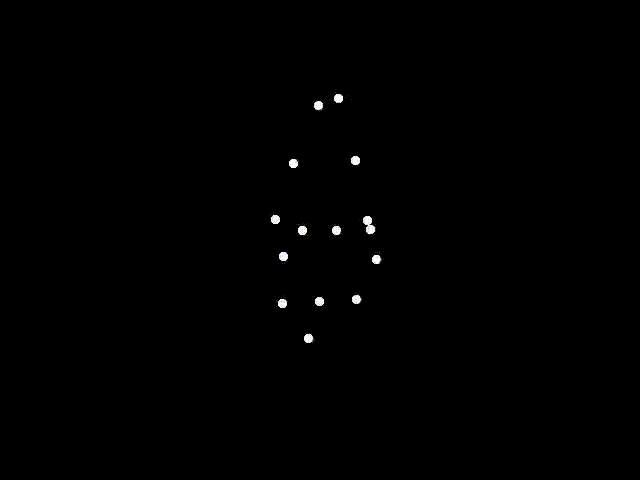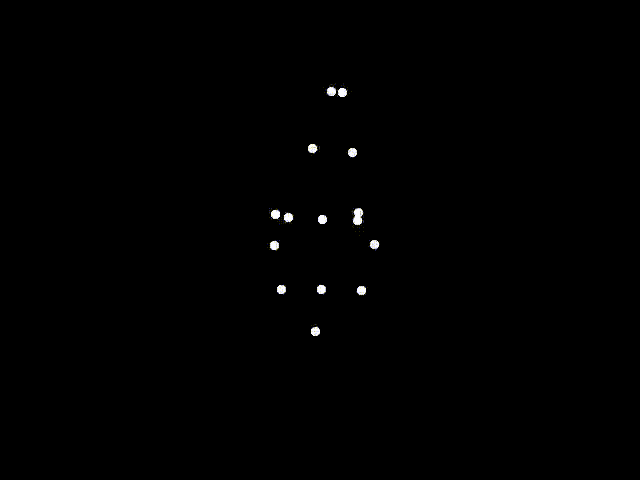Vertical Dance
Biological motion perception refers to the ability of perceiving visual events based on the movements of a series of moving points (point-light displays, or PLD). This ability was observed not only human subjects, but also in other non-human animals, such as pigeons (Troje & Aust, 2013). However, it has been shown that artificially inverting the PLD from its canonical orientation would impair the observers' ability to recognize the movement.
Vertical dance is a type of aerial modern dance that requires a dancer to be suspended in a harness and perform sequences of movements while in the air. In other words, vertical dancers are accustomed to perceiving and performing conventional dance movements in an inverted orientation. Animations below show a dancer performing Développé à la seconde on the ground in an upright orientation and in the air in an inverted orientation.
 |  |
|---|---|
| Ground | Air |
Given their visuomotor experience with inverted movements, would vertical dancers be more proficient at identifying artificially inverted movements?
We recorded ten pairs of dance movements performed by two professional vertical dancers using the Vicon Motion Capture System. Each movement pair contains a ground movement and an air movement. We then artificially inverted these movements and asked non-dancers, typical dancers, and vertical dancers to determine whether the displayed movement was artificially inverted.
 |  |
|---|---|
| Ground - Inverted | Air - Inverted |
Only being familiar with movements performed on the ground in an upright orientation, both non-dancers and typical dancers had no problem with identifying the inversion when the movement was performed on the ground. However, their lack of motor experience with movements performed in the air in an upright orientation prevented them from correctly identifying the inverted air movements. On the contrary, with extended motor experience with performing inverted movements in the air, vertical dancers could successfully identify the inversion with the air movements.
Our findings suggest that motor experience plays a more critical role in enabling the observers to overcome the biological motion inversion effect.
To find out more, check out this video on YouTube and the paper in Scientific Reports.
Related Publications
Wang, X.M., Wilson, M.A., Song, Y., Ma, G., Dong M., & Zhu, Q. (2022). Extended visuomotor experience with inverted movements can overcome the inversion effect in biological motion perception. Scientific Reports, 12: 17538. https://doi.org/10.1038/s41598-022-21000-1.